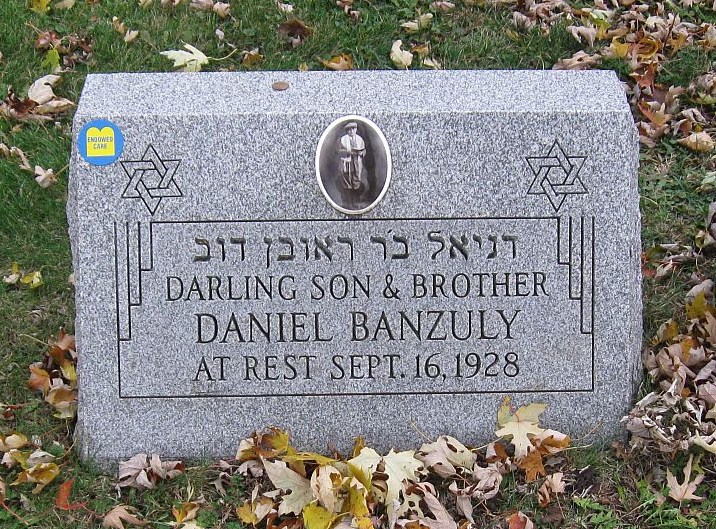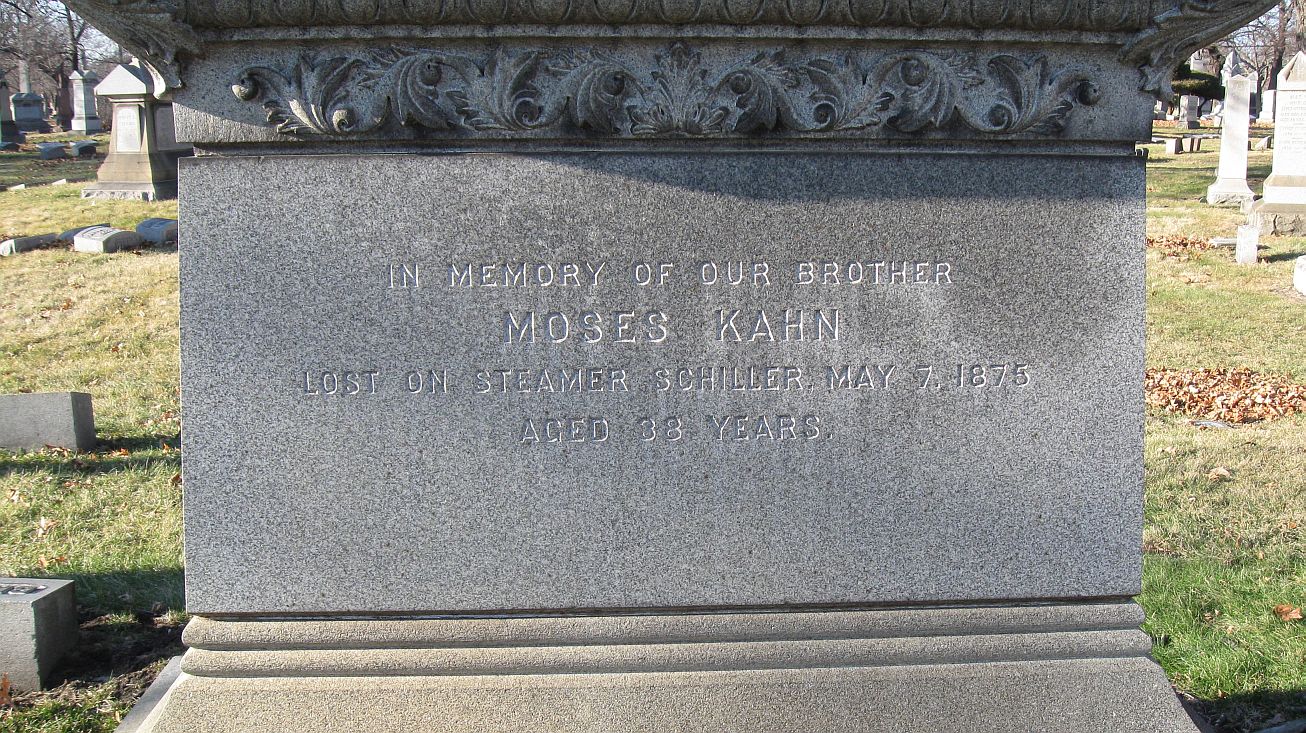As a student of history I thought that I was aware of most all of the maritime disasters of modern times. A trip to Rosehill Cemetery last week proved me to be wrong. As I was photographing the grave of a prominent Chicago rabbi for kevarim.com, I looked over and saw an inscription on a large monument:
“In Memory of Our Brother
Moses Kahn
Lost on Steamer Schiller May 7, 1875
Aged 38 Years”
I had never heard of the steamship Schiller, or of a disaster about her. A look at Wikipedia gave me the horrendous details:
SS Schiller was a 3,421 ton German ocean liner, one of the largest vessels of her time. She plied her trade across the Atlantic Ocean, carrying passengers between New York and Hamburg for the German Transatlantic Steam Navigation Line. She became notorious on 7 May 1875, when while operating on her normal route she hit the Retarrier Ledges in the Isles of Scilly, causing her to sink with the loss of most of her crew and passengers, totaling 335 fatalities.
The ship was built 380ft long with a 40ft beam in Hamburg in August 1873 for her German owners, and had plied the Atlantic routes for just two years without major incident. In addition to her load of 254 passengers, she was carrying 250 mail bags intended for Australia, highly valuable general cargo, and 300,000 $20 coins totaling £60,000 at contemporary value and over £6 million today.
The ship was engaged to sail from New York on 27 April 1875, and had arranged to call at Plymouth and Cherbourg on her route homeward to Hamburg. She made excellent time with her combination of two masts and engines, and by 7 May was nearing her first port of call at Plymouth on the Devon coast.
Captain Thomas needed to slow due to poor visibility in thick sea fog as she entered the English Channel, and was able to calculate that his ship was in the region of the Isles of Scilly, and thus within range of the Bishop Rock lighthouse which would provide him with information about his position. To facilitate finding the islands and the reefs which surround them, volunteers from the passengers were brought on deck to try to find the light. These lookouts unfortunately failed to see the light, which they were expecting on the starboard quarter, when in fact it was well to port (nautical). This meant that the Schiller was sailing straight between the islands on the inside of the lighthouse, leaving the ship heading towards the Retarrier Ledges.
The Schiller grounded on the reef at 10pm, and sustained significant damage, but not enough in itself to sink the large ship. The captain attempted to reverse off the rocks, pulling the ship free but exposing it to the heavy seas which were brewing, which flung the liner onto the rocks by its broadside three times, stoving in the hull and making the ship list dangerously as the lights died and pandemonium broke out on deck as passengers fought to get into the lifeboats.
It was at these boats that the real disaster began, as several were not seaworthy due to poor maintenance and others were destroyed, crushed by the ship's funnels which fell amongst the panicked passengers. The captain attempted to restore order with his pistol and sword, but as he did so, the only two serviceable lifeboats were launched, carrying 27 people, far less than their full capacity. These boats eventually made it to shore, carrying 26 men and one woman.
On board the ship the situation only became worse, as breakers washed completely over the wreck. All the women and children on board, over 50 people, were hurried in to the deck house to escape the worst of the storm. It was there that the greatest tragedy happened, when before the eyes of the horrified crew and male passengers, a huge wave ripped off the deck house roof and swept the occupants into the sea, killing all inside.
The wreck continued to be pounded all night, and gradually those remaining on board were swept away or died from exposure to cold seas, wind and resulting hypothermia, until the morning light brought rescue for a handful of survivors.
The recognized manner of signaling disaster at sea was by the firing of minute guns, carried on all ships for signaling purposes. Unfortunately, it had become the custom in the islands to fire a minute gun as your ship passed safely through the area, and so the firing of the Schiller's guns failed to produce hoped for rescue. Such an operation at night and in the dark would have been near impossible anyway with such high seas, and thus it was not until the first light that rescue craft began arriving.
St Agnes pilot gig, the O and M, was summoned to investigate multiple cannon shots. Her crew discovered the mast of the sinking Schiller. The O and M rowed to pick up five survivors before returning to St Agnes for assistance. Steamers and ferries from as far away as Newlyn, Cornwall, assisted the rescue operation.
Of her original 254 passengers and 118 crew, there were 37 survivors. The death toll, 335, made the disaster one of the worst in British history.
Along with Moses Kahn, another of the victims of the disaster whose body was never recovered, was Joseph Schlitz, the brew master from Milwaukee. Furthermore, in respect to the great assistance that the inhabitants of the Scilly Isles made to assist the mostly German people on board the Schiller, orders were given in the two World Wars to spare the Isles of Scilly from being attacked by German forces.
It is always a tragedy to lose a loved one in a disaster, but the tragedy is compounded when there is not even a body to bury. May Moses Kahn, and all the victims of the SS. Schiller, rest in peace.









